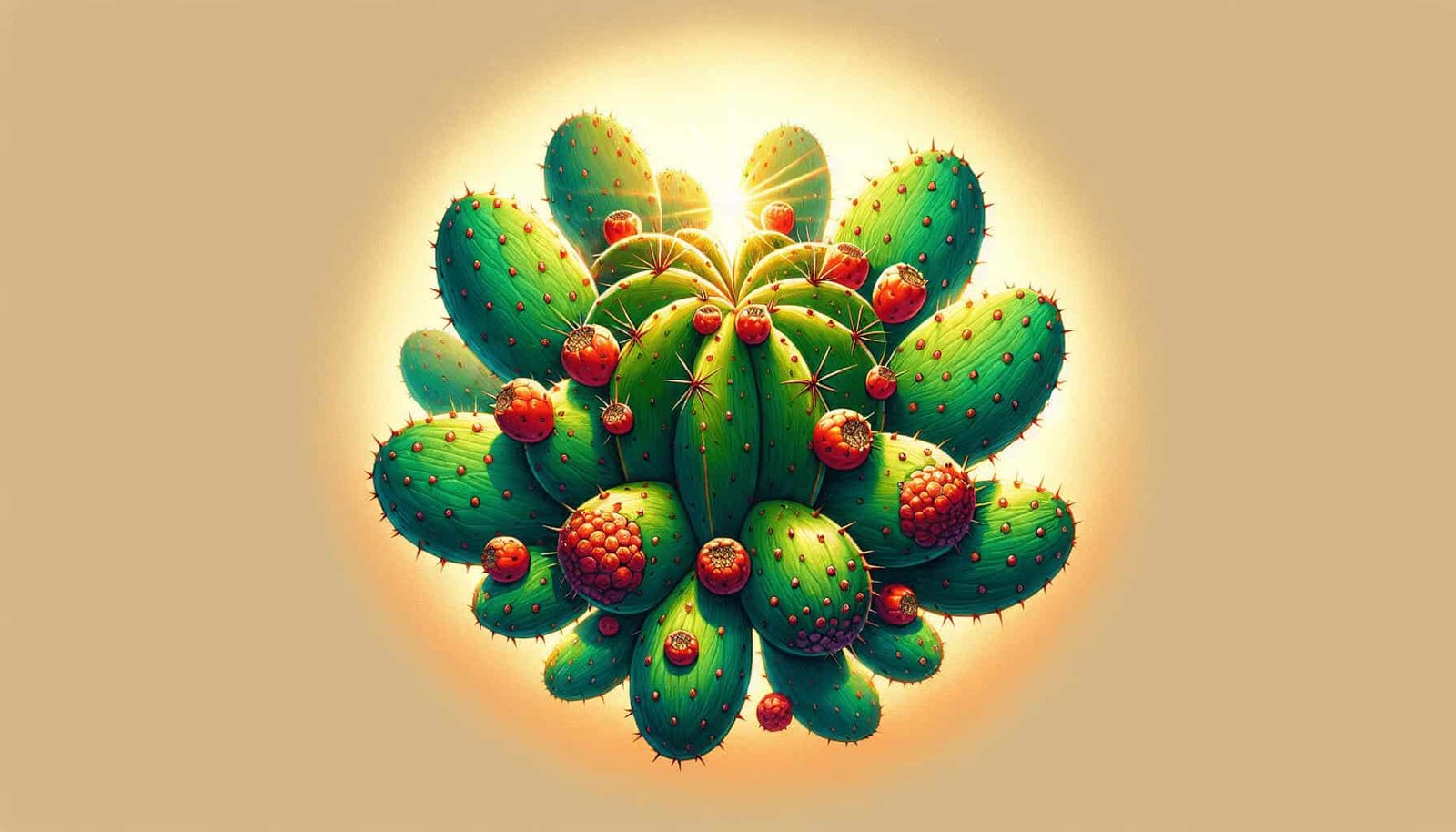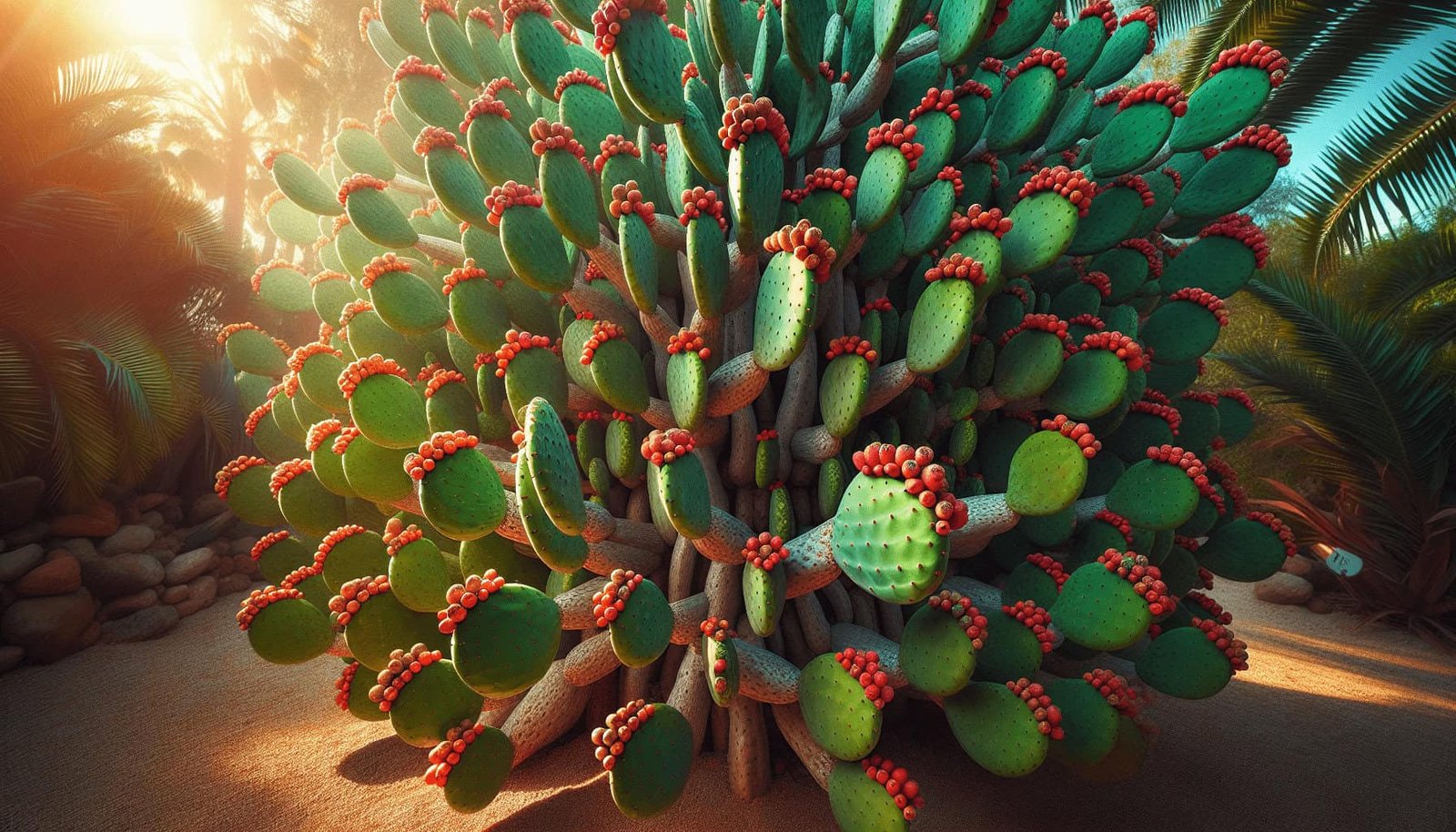Have you ever wondered how to maintain nopal for optimal health and longevity? Nopal, also known as the prickly pear cactus, isn’t just a plant that survives harsh desert conditions; it’s also a powerful tool for enhancing your well-being. When properly cared for, it can yield numerous health benefits ranging from managing blood sugar levels to promoting digestive health.

What is Nopal?
Nopal, commonly referred to as the prickly pear cactus, is native to the southwestern United States and Mexico. This cactus is recognized for its thick, fleshy pads and vibrant flowers. You might already know it as a culinary delight in various dishes, but it’s also packed with nutrients like fiber, vitamins, and antioxidants.
Nutritional Breakdown
To understand why nopal is so beneficial, let’s look at its nutritional profile. Here’s a breakdown of some key nutrients found in nopal:
| Nutrient | Amount per 1 cup (149g) | % Daily Value* |
|---|---|---|
| Calories | 61 | 3% |
| Fiber | 6g | 24% |
| Vitamin C | 13.1mg | 22% |
| Magnesium | 87.5mg | 22% |
| Calcium | 141mg | 14% |
| Potassium | 328mg | 9% |
*Percent Daily Values are based on a 2,000 calorie diet.
The combination of these nutrients makes nopal an excellent food for anyone looking to balance their diet and support overall health.
Growing Nopal: Basic Guidelines
If you’re eager to cultivate your own nopal, you’ll find that it’s relatively easy to grow and maintain. Here are some fundamental aspects to consider:
Choosing the Right Location
Nopal thrives in areas with plenty of sunlight and well-drained soil. If planting outdoors, find a spot that gets at least six hours of sunlight daily. If you’re growing it indoors, make sure to place it near a south-facing window.
Planting your Nopal
You can start nopal from seeds or pads. If you choose pads, ensure that they are mature and healthy. Here is a simple guide to planting nopal pads:
- Prepare the Soil: Nopal grows best in sandy or clay soil that drains well. You can improve soil drainage by adding gravel or perlite.
- Plant the Pad: Leave the base of the pad to dry for a few days before planting. This helps prevent rot. Plant the pad about 1-2 inches deep in the soil.
- Water Sparingly: Water the nopal lightly once planted. Nopal is quite drought-resistant, so overwatering can harm the plant.
Ongoing Maintenance
Maintaining nopal requires minimal effort but there are some crucial steps to follow to ensure its health and longevity.
Watering
Nopal doesn’t require frequent watering as it is adapted to arid environments. Here are some tips on watering:
- Frequency: Water your nopal once every two to four weeks, depending on humidity levels and season.
- Amount: Ensure the soil is thoroughly soaked but also make sure it dries out completely before the next watering.
Fertilizing
Nopal doesn’t generally need fertilizer, but a little boost once or twice a year can promote better growth and yield:
- Type of Fertilizer: Use a balanced fertilizer (10-10-10) or one specifically designed for cacti and succulents.
- Application: Apply fertilizer in the early spring and late summer. Water the plant lightly after fertilizing to help those nutrients seep into the soil.
Pruning
Regular pruning helps keep your nopal healthy by removing dead or rotting pads and encouraging new growth:
- When to Prune: It’s best to prune in the spring when the plant is about to enter its growing season.
- How to Prune: Use a sharp, clean knife to cut off any pads that are damaged or showing signs of disease. Make straight cuts at the base of the pad.
Harvesting Nopal
Knowing when and how to harvest nopal pads is crucial for optimizing their nutritional content and taste.
Ideal Time to Harvest
Nopal pads are typically ready to harvest when they are young and tender. The best time is usually in the spring or early summer:
- Signs of Readiness: Look for pads that are bright green and about 6-8 inches long. They should also feel firm to the touch.
Harvesting Technique
Always use gloves to protect your hands from the plant’s spines:
- Cutting the Pads: Use a sharp, clean knife to slice the pads off at the base.
- Removing Spines: Use a vegetable peeler or knife to remove the spines and glochids (tiny hair-like spines).

Health Benefits
Maintaining and consuming nopal pads can offer a wide range of health benefits:
Blood Sugar Management
Nopal has been widely studied for its potential to manage blood sugar levels thanks to its fiber content and bioactive compounds:
- Mechanism: The soluble fibers in nopal slow down the absorption of sugar in the bloodstream, making it a beneficial food for diabetics or those at risk of diabetes.
Anti-Inflammatory Properties
Nopal is rich in antioxidants like vitamin C and various polyphenols that can reduce inflammation in the body:
- Benefits: Regular consumption can help with conditions such as arthritis, asthma, and other inflammatory ailments.
Digestive Health
High in fiber, nopal can aid in maintaining a healthy digestive system:
- Mechanism: The dietary fiber in nopal helps regulate bowel movements, preventing constipation and supporting gut health.
Cardiovascular Benefits
Rich in potassium and magnesium, nopal supports heart health by regulating blood pressure and promoting proper cardiac function:
- Heart Health: Potassium helps manage blood pressure by balancing sodium levels in the body, while magnesium promotes normal heart rhythm.
Culinary Uses
Nopal can be a versatile addition to your kitchen, offering both nutritional benefits and unique flavors.
Preparing Nopal
Before you use nopal in your recipes, it’s essential to clean and prepare it properly:
- Cleaning: After removing the spines, wash the pads thoroughly under running water to remove any remaining dirt or spines.
- Cutting: Slice the pads into small strips or cubes, as required by your recipe.
Recipe Ideas
Here are some delicious ways to incorporate nopal into your meals:
- Nopal Salad: Mix chopped nopal pads with tomatoes, onions, cilantro, and lime juice for a refreshing salad.
- Grilled Nopal: Grill nopal pads with a bit of olive oil and salt for a tasty side dish.
- Nopal Tacos: Add cooked nopal strips to your favorite taco recipe for a unique twist.
Potential Risks and Considerations
While nopal is generally considered safe and healthy, it’s essential to be aware of potential risks and considerations:
Allergies
Some individuals may experience allergic reactions to nopal:
- Symptoms: Allergies can manifest through skin rashes, itching, or gastrointestinal distress. Always start with a small amount to assess your tolerance.
Digestive Issues
Consuming large quantities of nopal can lead to digestive discomfort:
- Symptoms: This might include bloating, gas, or diarrhea. Moderation is key, especially if you’re new to this plant.
Medication Interactions
Nopal may interact with certain medications, particularly those for diabetes:
- Consult Your Doctor: If you’re on medication, particularly for diabetes, consult your healthcare provider before adding nopal to your diet.
Sustainability
Growing and consuming nopal is not just good for you; it’s also beneficial for the environment:
Drought Resistance
Nopal survives in arid climates with minimal water, making it a sustainable crop in regions facing water scarcity.
Soil Quality
Nopal can improve soil health through nitrogen fixation, making it an excellent plant for rehabilitation of degraded lands.
Biodiversity
By cultivating nopal, you contribute to preserving this species and supporting local ecosystems.
Conclusion
Maintaining nopal for optimal health and longevity isn’t just about the plant itself; it’s also about understanding its incredible benefits and how to integrate it into your life. From growing and caring for the plant to enjoying its many health benefits and culinary uses, nopal can be a fantastic addition to your journey towards a healthier lifestyle. By following the guidelines on planting, maintenance, and harvesting, you’ll find that nopal can be a resilient, nutritious, and delicious part of your diet. Whether you’re preparing a fresh nopal salad or savoring its anti-inflammatory properties, this remarkable cactus can contribute significantly to your overall wellness. So, are you ready to make nopal a part of your life?

